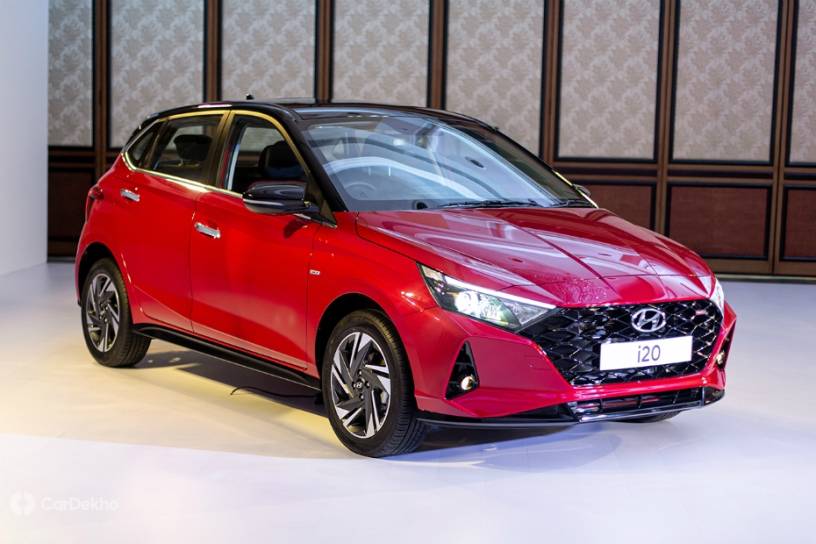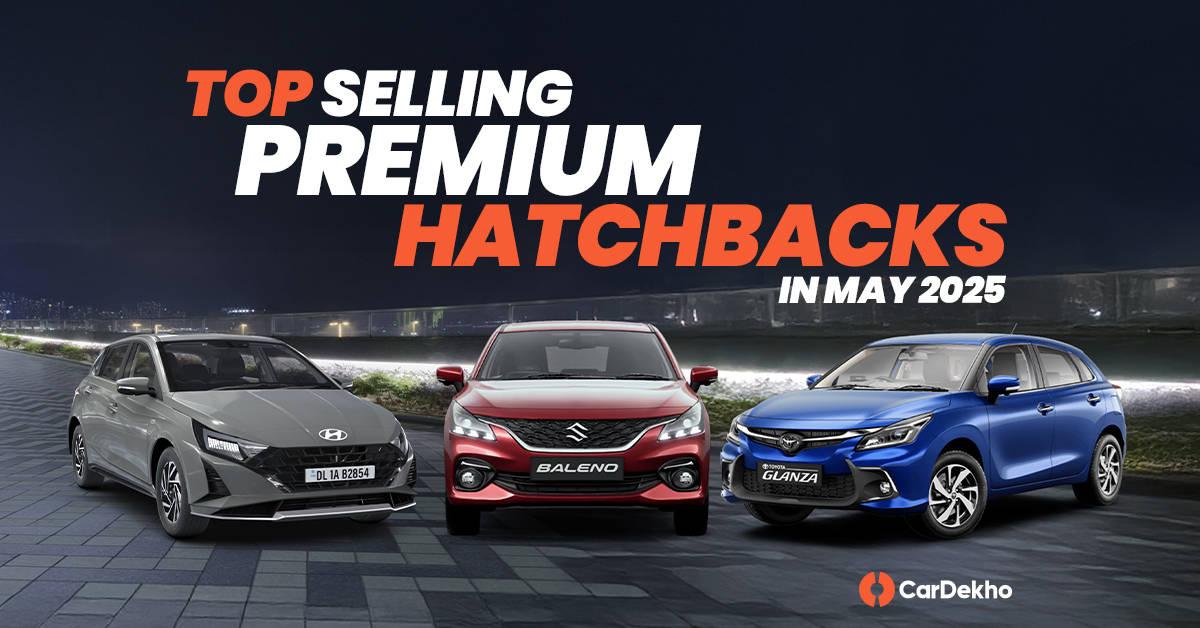2020 Hyundai i20 Review: First Impressions
Published On Nov 05, 2020 02:59 PM By Arun
- Write a comment
The new i20 may not be rewriting premium hatchback rules, but it’s certainly pushing the envelope.

If you’re in the market to buy your first car, chances are Hyundai’s i20 has been discussed at your dinner table. For years, the premium hatchback has offered a blend of quality, desirable features and bang for buck.
While the third generation of the i20 might look radical and posh, Hyundai has cleverly chosen to stick to the basics. Under the skin, the new i20 continues to deliver on what made it a household name, and brings its own strengths to the mix.
Exterior
The immediate feeling is that the i20 now looks bigger, even though the numbers on paper suggest a relatively mild increase of 10mm in length and wheelbase. The stretched out headlamps and large grille amplify the additional 41mm of width from the front. At the rear, the connected tail lamps and the clever gloss black applique under the windscreen do the same. While Hyundai claims height has remained unchanged, the i20 might look like it’s sitting slightly lower.

Most of that feeling is down to the way the bonnet slopes down aggressively into the front bumper. The face is in line with modern-day Hyundais. You may love it or hate it, but you certainly won’t ignore it. Surprisingly, full-LED headlamps have been given a miss for the Indian-spec car. LED projector headlamps take their place, with an eyebrow-like LED daytime running lamp. You get cornering lamps too, and a halogen turn indicator. Hyundai could’ve integrated the indicator into the DRL itself. The halogen projector fog lamps sit in a neat triangular housing finished in gloss black.

In fact, Hyundai has been quite tasteful here, swapping gaudy chrome for a gloss black finish on the grille and on the ‘skirt’ for the bumper. The chrome has been used prudently at the side too, highlighting the door handles and the window line. The i20 has traded a suave suit for crossfit clothes, and the youthfulness shines through in the creases that make up the profile.

The top-spec Asta (O) wears 16-inch alloy wheels that fill up the wheel wells nicely. We also like how the dual-tone paint scheme has been executed. Sadly, the black roof is available with just two body colours: white and red. Other colours on offer are grey, silver, ink blue and copper.

Viewed from the rear, the low-set tail lamp, and more importantly, the rather garish chrome strip is bound to split opinions. What everyone will agree on, however, is the execution of the finer details. The “i20” branding in the lamps, the side skirts, the shark-fin antenna and the puddle lamps in the wing mirrors all do their bit in making the i20 feel premium.

If you pick the Turbo variants, the grille gets a diamond pattern and a tiny “Turbo” badge. Hyundai could’ve shown off a set of twin exhaust tips too, just like the Creta.
Interior

Getting in and out of the cabin of the i20 is easy. Elders in the family shouldn’t have an issue either. Setting up a comfortable driving position is made easy by tilt and telescopic adjust for the steering wheel, and height-adjustable seat for the driver. You’d have no complaints with respect to seating comfort here either: the side bolsters hold plus-sized frames well. Cabin width up front feels adequate too. However, those above 6ft tall might find headroom to be average, even with the seat pushed all the way down.

The cabin is a friendly place to be, however. Ergonomics are spot on, and you wouldn’t be fumbling to find a switch or a button. Hyundai has tried to emphasize on width in the interior too, by using large horizontal elements on the dashboard — mimicking a certain German luxury car. Surprisingly, Hyundai has opted for an all-black colour theme across variants. You do get contrast coloured accents (copper/red depending on the variant you pick) that liven the ambience up a bit, along with a soothing blue ambient lighting.

Quality, as you’d expect, is premium. The cross-stitch pattern on the top of the dash and the smooth finish for the centre portion offers an experience that’s (dare we say) richer than the Verna. However, this does not extend over to the door pads that get harder and scratchier plastic. It doesn’t help the i20’s case that there’s no wrap for the door pad’s elbow rest or that the only the driver's power window switch gets a backlight.


Storage spaces are aplenty with bottle holders in the door, a chilled glovebox and some more space in the centre console. However, like the Venue, an air purifier gobbles up a useful cup holder. But you’re likely to not mind, considering it’s among the segment-first features that the new i20 packs in.


The bigger highlights come in the form of a 10.25-inch touchscreen that’s borrowed from the Creta. There’s a 7-speaker Bose audio system too, with a subwoofer tucked away into the boot. Geeks will love that there’s wireless charging on offer (with a cooling function), and that the instrumentation is entirely digital. We aren’t big fans of the Verna-derived instrument cluster — the fonts for the speedo and tacho seem tacky. Given the simplicity of the MID, we’d have preferred simple analogue dials here. Other highlights on the top-spec i20 include keyless entry, push-button start, climate control, cruise control and automatic headlamps. Back benchers get their own AC vents, along with a USB charger and a pocket to park their phone.

On the space front, there’s a noticeable improvement. The added wheelbase and width strengthen the i20’s credentials as a family car. The scooped out headliner ensures someone as large as 6.5ft has head room to spare. There’s ample kneeroom for a 6 footer to sit behind his own driving position. Seating three here is now easier, and doesn’t feel as much of a squeeze as say the Venue.

Bumping up the sensibility quotient for the family is a 311-litre boot. That’s an added 26 litres of space for your luggage. A boot lamp is a neat touch, however skipping 60:40 split seats seems like an oversight.
Safety

Hyundai says the i20 is based on a new K-platform, 66 percent of which is a combination of high strength and advanced high strength steel. The top-spec Asta (O) variant gets six airbags, ABS with EBD, and ISOFIX child seat mounts. Vehicle stability management, hill assist and a tyre pressure monitoring system is on offer as well.
Engine
The i20 is offering a healthy range of engine and gearbox options. For heavy city use, you could consider the upgraded 1.2-litre petrol engine. This is offered with a 5-speed manual and a CVT. Interestingly, the automatic gets an additional 5PS of power.


For those who want petrol power for a combination of city commutes and highway sprints, Hyundai is offering the 1.0-litre turbo petrol as well. Interestingly, it’s in the Euro-spec N Line’s 120PS tune. The kicker: there’s no manual transmission here; instead you get to choose between a clutchless manual (iMT) and a 7-speed dual-clutch automatic.
If it’s diesel you desire, there’s a 1.5-litre motor with 100PS on tap. We do not expect Hyundai to add a diesel automatic to the i20’s lineup.
Verdict

Hyundai’s i20 is offering a striking design, premium quality interiors and a wide range of engine-gearbox options. Features continue to be a strong point for the hatchback. Plus, with the update we see the i20 becoming a better family car, with more space and practicality. We’d reserve our final judgement till we drive it. For now, whether you’re considering it as your first car, as a replacement to your old i20 or even an addition to your garage, the i20 ticks all the right boxes.
1 out of 1 found this helpful













